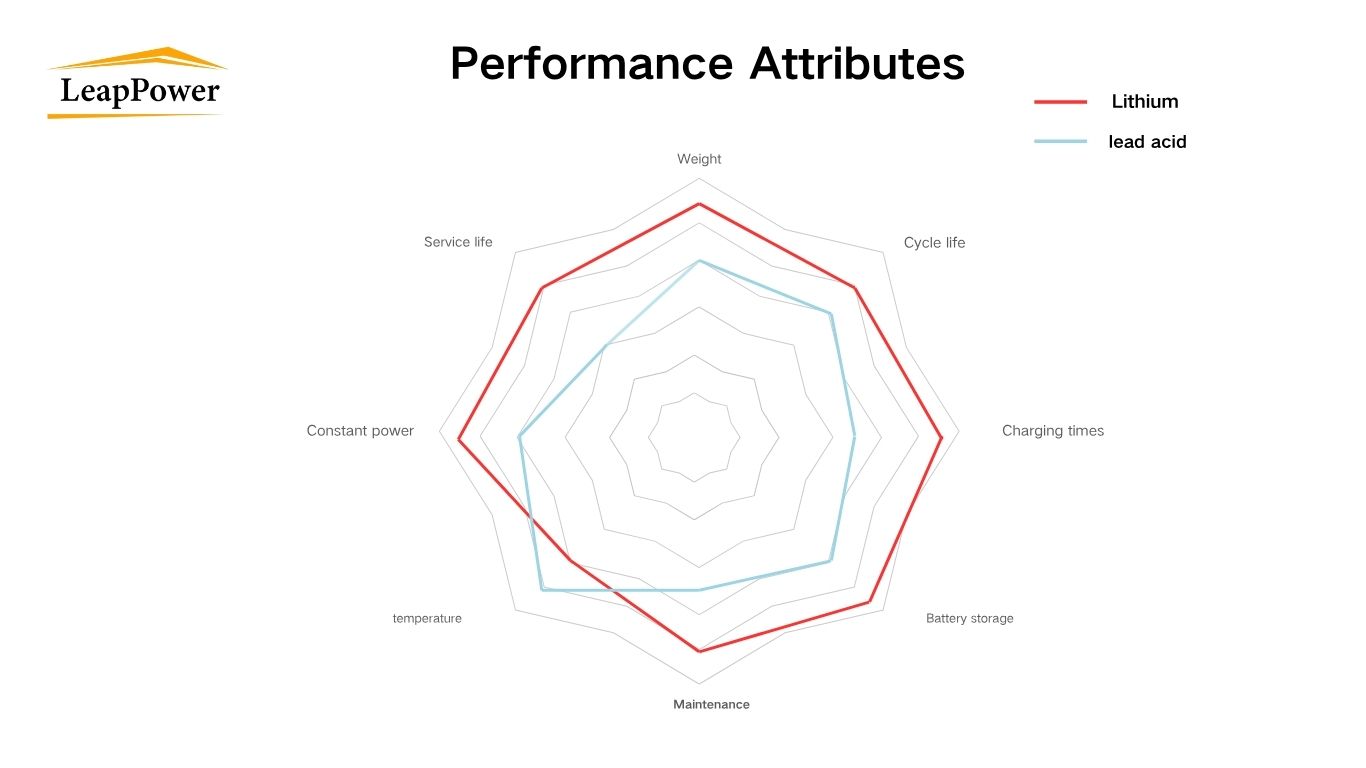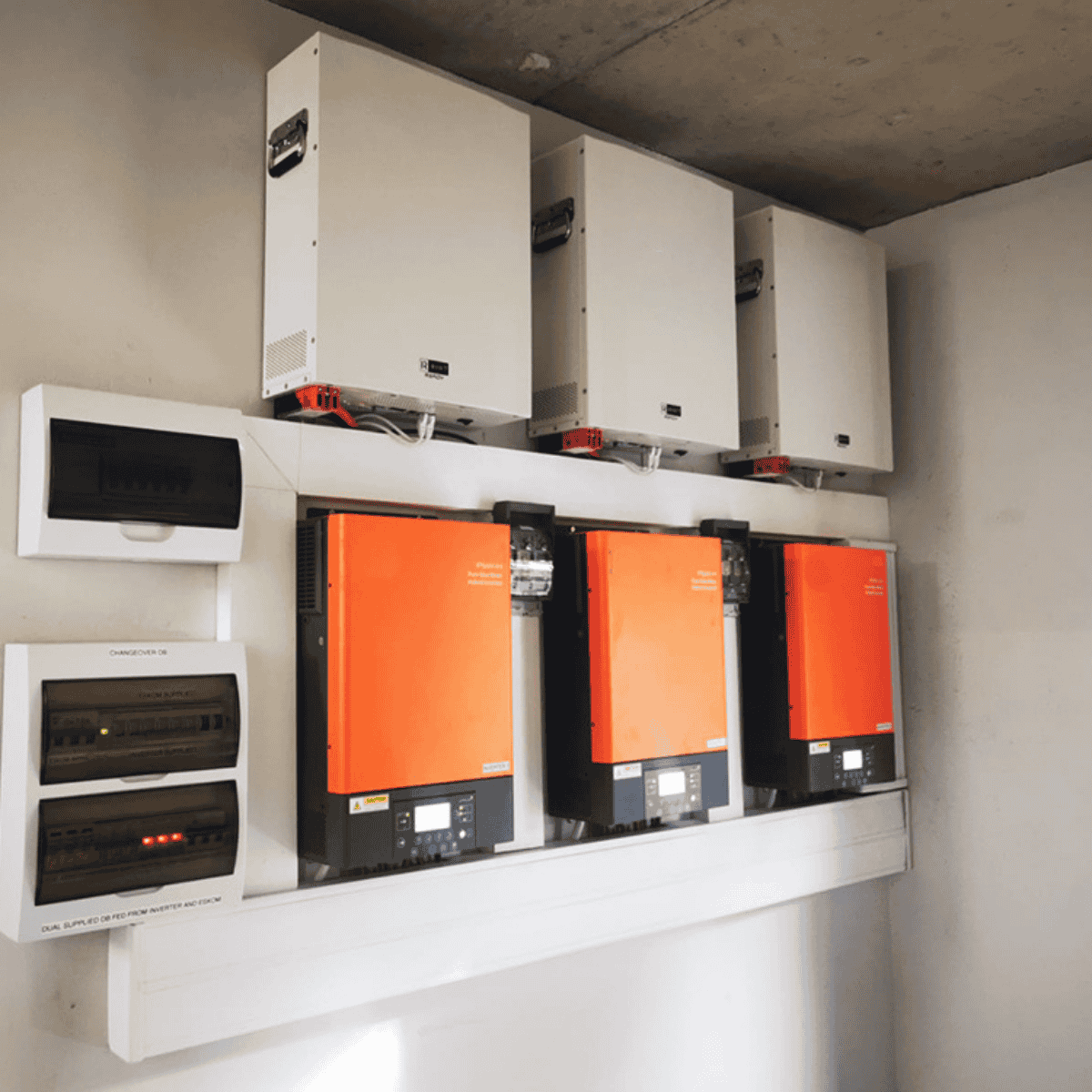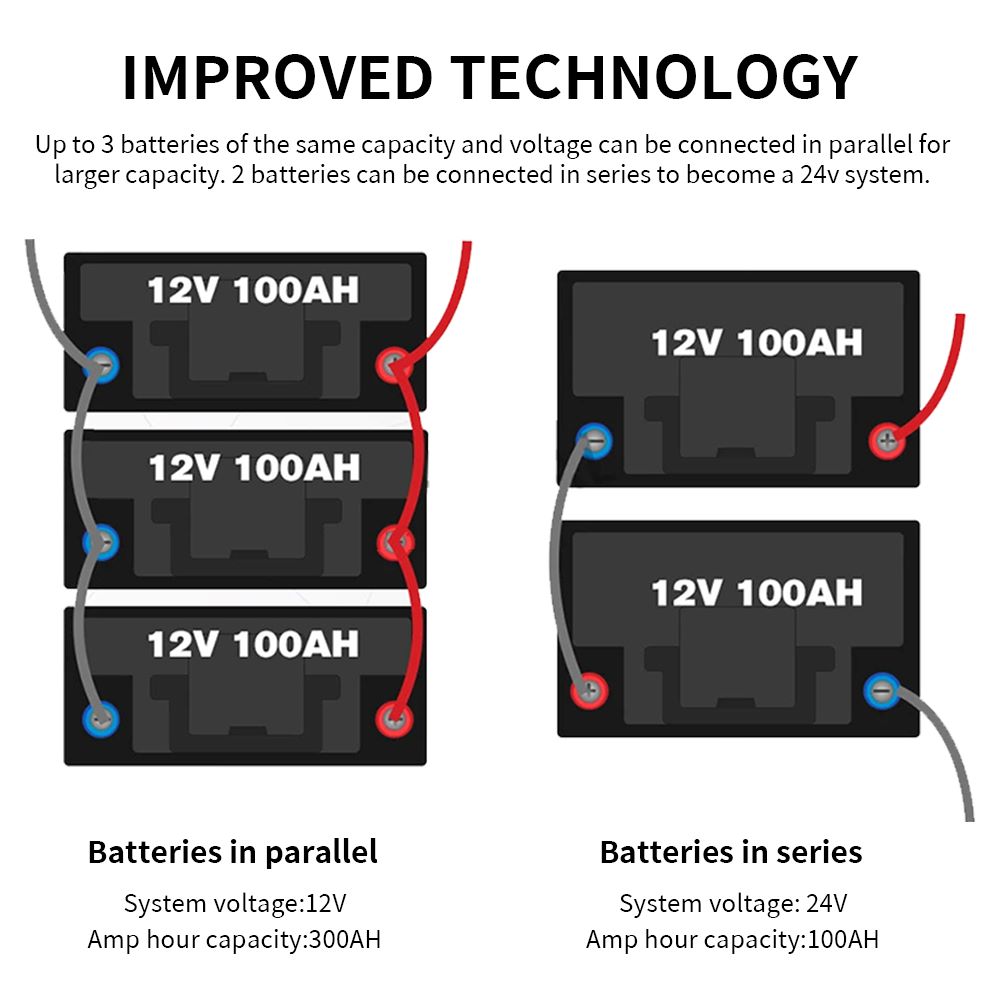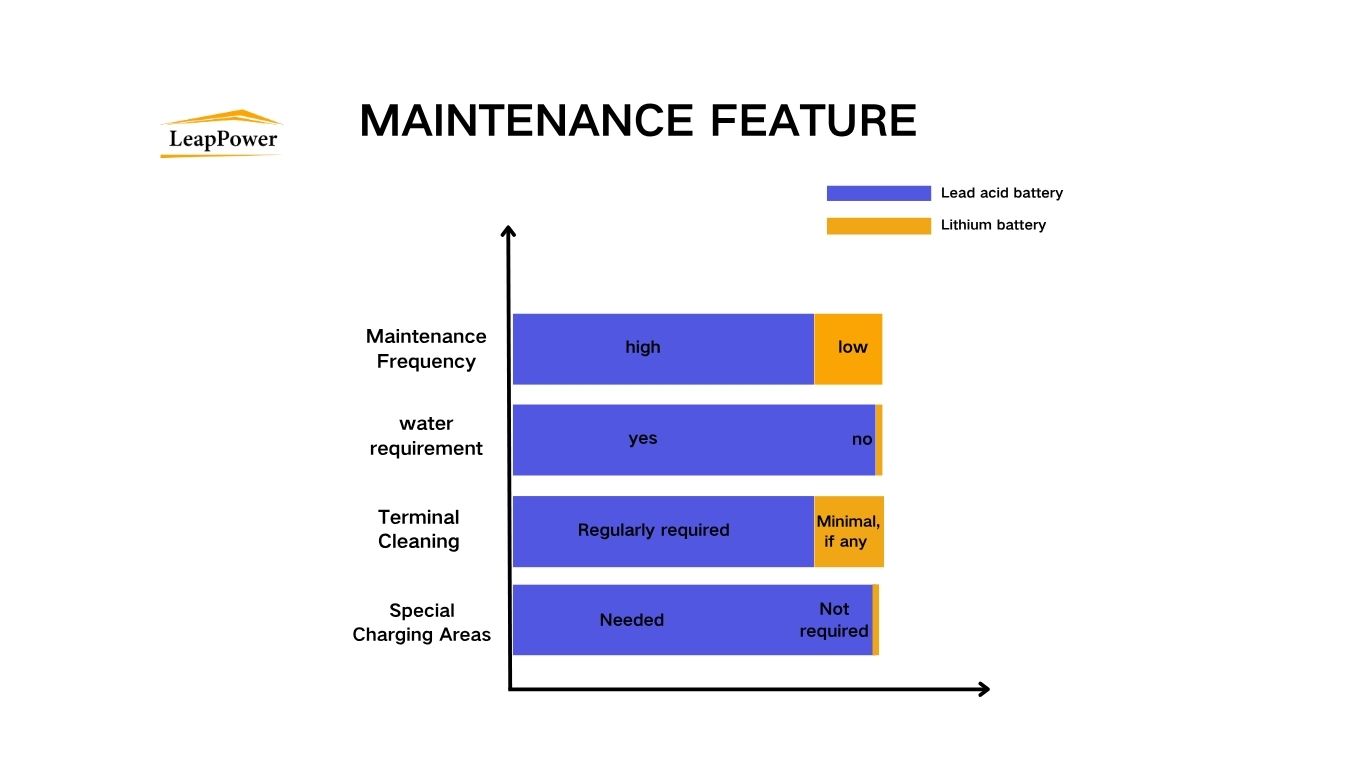When it comes to choose the right battery to charge electronic devices, you likely have a list of conditions to consider. What is the cycle life? How much voltage is needed?What's more, there are many option in the market, it can be difficult to decide which one is most suitable. Except for the most popular LiFePO4 battery, two other types of batteries are often compared to each other: Lithium Vs Lead Acid Batteries.
While lead-acid batteries may catch your eye with their lower upfront costs, lithium batteries offer significant advantages in longevity and efficiency. As you weigh the benefits of each type, consider factors like service life and maintenance needs. What might seem like a simple choice could have far-reaching implications for your energy solutions. In this article, we will explore the different between them to help you make a right decision.

The comparison of lithium vs lead acid batteries reveals a substantial difference in weight, with lithium batteries averaging 55% lighter than their lead acid counterparts. A lead acid battery weighs approximately 30 kg per kWh, while a lithium battery is only around 6 kg per kWh.
This weight advantage is essential for portable devices, electric vehicles, and renewable energy systems. Weight is a crucial factor in determining the feasibility of purchasing and installing lithium batteries in remote areas where logistics are challenging, such as in emergency lighting systems in elevated locations or residential areas in mountainous terrain.
Facing this situation, our design team has developed a new line of lithium batteries that are smaller and lighter than their predecessors. These batteries have been engineered to meet customers' space requirements and to facilitate transportation. For instance, the 5kwh wall-mounted battery has been reduced in weight by approximately 6kg compared to the previous model.

Service life is a vital factor to evaluate when choosing lithium vs lead acid batteries.
Lithium batteries consistently outshine their lead-acid counterparts. Typically, lithium-ion batteries last 3-4 times longer than lead-acid batteries, ensuring you get more value over time.
This longevity translates to fewer replacements and lower overall costs. In applications where reliability is essential, the effective lifespan of lithium batteries means less downtime and maintenance.
While lead-acid batteries may have a lower initial price, their shorter service life makes them a less economical choice in the long run.
While considering the longevity of batteries, cycle life plays a critical role in determining overall performance and cost-effectiveness.
When comparing lithium vs lead acid batteries for solar applications, you’ll notice significant differences:
Additionally, considering lithium vs lead acid battery safety, lithium batteries feature advanced safety systems and produce no emissions, making them a superior choice for longevity and reliability.
Consistency in power delivery is essential for many applications, and lithium batteries excel in this regard. Unlike lead-acid batteries, which start strong but experience a gradual power decline, lithium batteries maintain a stable voltage throughout their discharge cycle.
This means you can rely on lithium for consistent performance, whether you're using it in a flashlight or an electric vehicle. When you use a lithium battery, you won’t notice any dimming or power loss until it’s nearly depleted, ensuring your devices operate effectively until the end.
This level of reliability is critical for applications that depend on uninterrupted power, highlighting the advantages of lithium technology over traditional lead-acid options. You'll appreciate the efficiency and dependability offered by lithium batteries in demanding scenarios.
When it comes to charging times, lithium batteries considerably outperform lead-acid batteries. You’ll find that lithium batteries can charge up to four times faster, drastically reducing your downtime.
Here are a few key advantages:
These factors combined mean you can rely on lithium batteries for quicker access to power and increased operational efficiency, making them a compelling choice over lead-acid options.
When it comes to temperature performance, lithium batteries outshine lead-acid batteries in both high and low conditions.
At elevated temperatures, lithium batteries can achieve twice the cycle life compared to lead-acid, while in cold environments, lithium maintains a higher discharge capacity.
Understanding these temperature effects is essential for optimizing battery selection based on application needs.
While many battery types face challenges in high-temperature environments, lithium batteries excel under such conditions due to their enhanced thermal stability and performance.
Here are three key advantages of lithium batteries in high temperatures:
Choosing lithium batteries for high-temperature applications can greatly improve efficiency and reliability, ultimately providing better long-term value.
Although cold temperatures can adversely affect battery performance, lithium batteries demonstrate superior capabilities compared to lead-acid variants in these conditions. When the temperature drops, lithium batteries still function effectively, maintaining a higher discharge capacity than lead-acid batteries. At 0°F, lithium batteries deliver 70% of their rated capacity, while lead-acid batteries only provide 45%.
Additionally, lithium batteries don’t accept a charge below 32°F, whereas lead-acid batteries can accept low current charges. This makes lithium a better choice for applications operating in colder climates, ensuring reliable performance when you need it most.
If you want to install the battery, you better know how to make it vent, thus optimize the performance and longevity of your energy system, particularly when choosing between lithium vs lead acid batteries.
Lithium batteries can be installed in any orientation without risk of leakage, while lead-acid batteries must remain upright to avoid venting issues. Further, lithium vs lead acid, especially for lead-acid, it needs to be installed in a place suitable for charging, lead-acid batteries require storage at 100% state of charge, whereas lithium shouldn't be stored at full charge to enhance lifespan.

When considering storage solutions, the differences between lithium vs lead acid SLA (sealed lead-acid) batteries can greatly impact performance and longevity.
Lithium batteries charge four times faster than SLA, allowing for quicker readiness and reduced downtime. They deliver consistent power throughout their discharge cycle, while SLA batteries exhibit diminishing performance over time.
Thus, Lithium should not be stored at 100% State of Charge(SOC), whereas Seal lead acid needs to be stored at 100%. Because when the lead acid stays in that partially discharged state for an extended time, it will lead to sulfation. Sulfation is the formation of lead sulfate crystals on the battery’s plates.
Even when fully charged, lead-acid batteries slowly self-discharge. That’s why you need to recharge every 3–6 months during storage.
Understanding the distinctions between series and parallel battery installations is vital for optimizing power delivery and capacity in various applications. Each configuration offers unique advantages that can greatly impact your system's performance.
It is important that they are matched all factors including capacity, voltage, resistance, state of charge, etc,. lithium vs lead acid battery cannot be used together in the same string.
For example, up to 3 batteries of the same capacity and voltage can be connected in parallel for large capacity. 2 batteries can be connected in series to become a 24v system.

In choosing between series and parallel battery installations, maintenance requirements can greatly influence your decision. Lead-acid batteries necessitate regular upkeep like topping up water and terminal cleaning, while lithium batteries are virtually maintenance-free. This difference can affect your operational efficiency and overall costs.

Ultimately, when lithium vs lead acid, opting for lithium can save you time and reduce hidden costs associated with maintenance, enhancing your overall experience and efficiency in battery management.
While evaluating battery options, safety, waterproofing, and emissions are critical factors that directly impact operational reliability and environmental responsibility. Here are some key points to contemplate:
In the grand showdown between lithium vs lead acid batteries, the scales tip in favor of lithium for modern applications. While lead-acid may seem like a budget-friendly option at first glance, lithium's superior longevity, efficiency, and minimal maintenance make it the smarter investment—like choosing a smartphone over a flip phone in today’s tech-driven world. Ultimately, opting for lithium not only enhances performance but also contributes to a more sustainable future. It's a choice that pays off in the long run.
"When the going gets tough, the tough get going." Lithium batteries excel in extreme weather, maintaining performance in both heat and cold. They outperform lead-acid batteries considerably, ensuring reliability when conditions are harsh.
You’ll find lithium batteries excel in applications requiring quick charging, high discharge rates, and minimal maintenance, such as electric vehicles, renewable energy storage, and portable electronics. Their lightweight nature and longevity further enhance their suitability.
When you recycle lithium batteries, like those from electric vehicles, you recover valuable materials. Companies are developing efficient processes to reclaim lithium, cobalt, and nickel, minimizing environmental impact and promoting sustainability in battery production.
When comparing lithium batteries to other technologies, you’ll find they offer superior cycle life, efficiency, and maintenance-free operation. Their lightweight design enhances usability, making them ideal for demanding applications where consistent performance is essential.
Lithium batteries incorporate advanced safety features, including automatic disconnection, balancing management, and remote control systems. These enhancements guarantee reliable operation, prevent overcharging, and minimize risks, providing you with peace of mind in various applications.


About The Author: Emmy Zheng
"We strive to deliver real value for our customers through distinctive design, superb quality and excellent customer service at prices that reflect the real worth of our products."




[…] lead-acid batteries are essential in automotive and backup power systems, known for their robustness and […]
[…] degradation, LiFePO4 batteries present a lower ecological footprint. If you want to know more about the different between lead- acid vs Lithium, you can move to our previous […]